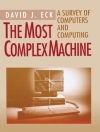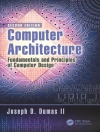Soft Computing is a complex of methodologies that embraces approximate reasoning, imprecision, uncertainty and partial truth in order to mimic the remarkable human capability of making decisions in real-life, ambiguous environments. Soft Computing has therefore become popular in developing systems that encapsulate human expertise. Applications of Soft Computing: Recent Trends contains a collection of papers that were presented at the 10th Online World Conference on Soft Computing in Industrial Applications, held in September 2005. This carefully edited book provides a comprehensive overview of the recent advances in the industrial applications of soft computing and covers a wide range of application areas, including optimisation, data analysis and data mining, computer graphics and vision, prediction and diagnosis, design, intelligent control, and traffic and transportation systems. The book is aimed at researchers and professional engineers who are engaged in developing and applying intelligent systems. It is also suitable as wider reading for science and engineering postgraduate students.
Inhoudsopgave
Computer Graphics, Imaging and Vision.- Efficient Genetic Algorithms for Arabic Handwritten Characters Recognition.- Generic Black Box Optimisation Algorithms for Colour Quantisation.- Neural Network Combined with Fuzzy Logic to Remove Salt and Pepper Noise in Digital Images.- Computing Optimized NURBS Curves using Simulated Evolution on Control Parameters.- Control and Robotics.- Design of A Takagi-Sugeno Fuzzy Compensator for Inverted Pendulum Control Using Bode Plots.- Soft Computing in Accuracy Enhancement of Machine Tools.- Mobile Robot Navigation: Potential Field Approach Vs. Genetic-Fuzzy System.- Intelligent Tuning and Application of a PID Controller Using Universal Model.- Design.- Dynamic Reconfiguration Algorithm for Field Programmable Analog Scalable Device Array (FPADA) with Fixed Topology.- Advances in the Application of Machine Learning Techniques in Drug Discovery, Design and Development.- A Review on Design Optimisation and Exploration with Interactive Evolutionary Computation.- Pattern Recognition.- Mapping of Natural Patterns by Liquid Architectures Implementing Neural Cliques.- Pattern Recognition Using Modular Neural Networks and Fuzzy Integral as Method for Response Integration.- Genetic Algorithm-Evolved Bayesian Network Classifier for Medical Applications.- A Real-Time Hand Gesture Interface for Medical Visualization Applications.- Classification.- A Hybrid Intelligent System and Its Application to Fault Detection and Diagnosis.- Evolutionary Multidimensional Scaling for Data Visualization and Classification.- Extended Genetic Algorithm for Tuning a Multiple Classifier System.- Development of Fuzzy Expert System for Customer and Service Advisor Categorisation within Contact Centre Environment.- Soft Computing for Intelligent Information Management.- Soft Computing in Intelligent Data Analysis.- Identification and Forecasting.- Neural Network-Based Expert System to Predict the Results of Finite Element Analysis.- Modular Neural Networks with Fuzzy Integration Applied to Time Series Prediction.- Fuzzy Model Identification for Rapid Nickel-Cadmium Battery Charger through Particle Swarm Optimization Algorithm.- Fuzzy Association Rule Mining for Model Structure Identification.- Modeling Public Transport Trips with General Regression Neural Networks; A Case Study for Istanbul Metropolitan Area.- Optimization Problems: Assignment, Partitioning and Ordering.- Use of Genetic Algorithm to Optimum Test Frequency Selection.- Performance Analysis of Parallel Strategies for Bi-objective Network Partitioning.- A Guided Rule Reduction System for Prioritization of Failures in Fuzzy FMEA.- A Hybrid Method of Differential Evolution and SQP for Solving the Economic Dispatch Problem with Valve-Point Effect.- Multiobjective Prioritization in the Analytic Hierarchy Process by Evolutionary Computing.- Evolutionary and Heuristic Algorithms for Multiobjective 0–1 Knapsack Problem.- The Assignment of Referees to WSC10 Submissions: An Evolutionary Approach.- Optimization Methods: Development and Analysis.- Robustness using Multi-Objective Evolutionary Algorithms.- Genetic Programming, Probabilistic Incremental Program Evolution, and Scalability.- Adaptive Parameter Control of Evolutionary Algorithms Under Time Constraints.- Role of Chaos in Swarm Intelligence — A Preliminary Analysis.- Multi-parent Recombination Operator with Multiple Probability Distribution for Real Coded Genetic Algorithm.- Tutorials.- Special Tutorial — State of the Art Face Detection: Cascade Boosting Approaches.- Special Tutorial — Particle Swarms for Fuzzy Models Identification.- Special Tutorial — Project Management: Issues in Computer Based Monitoring and Control with Soft Computing Approaches.












